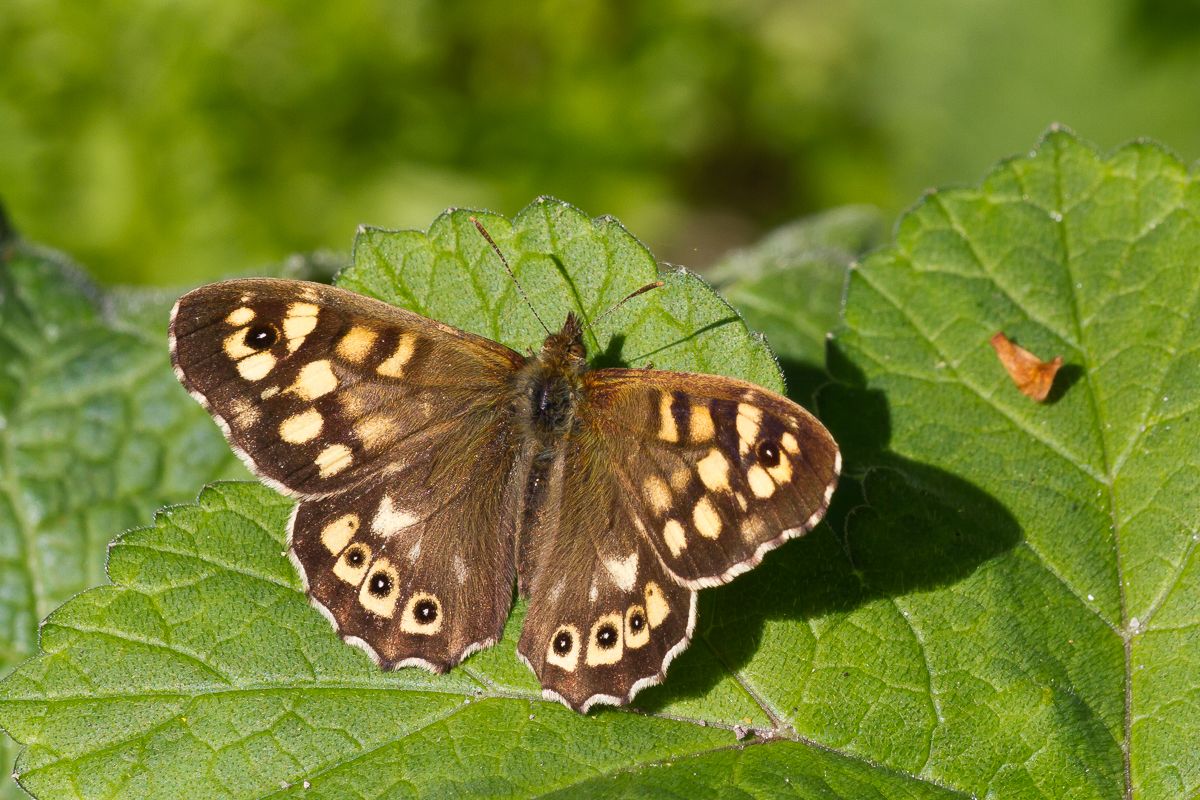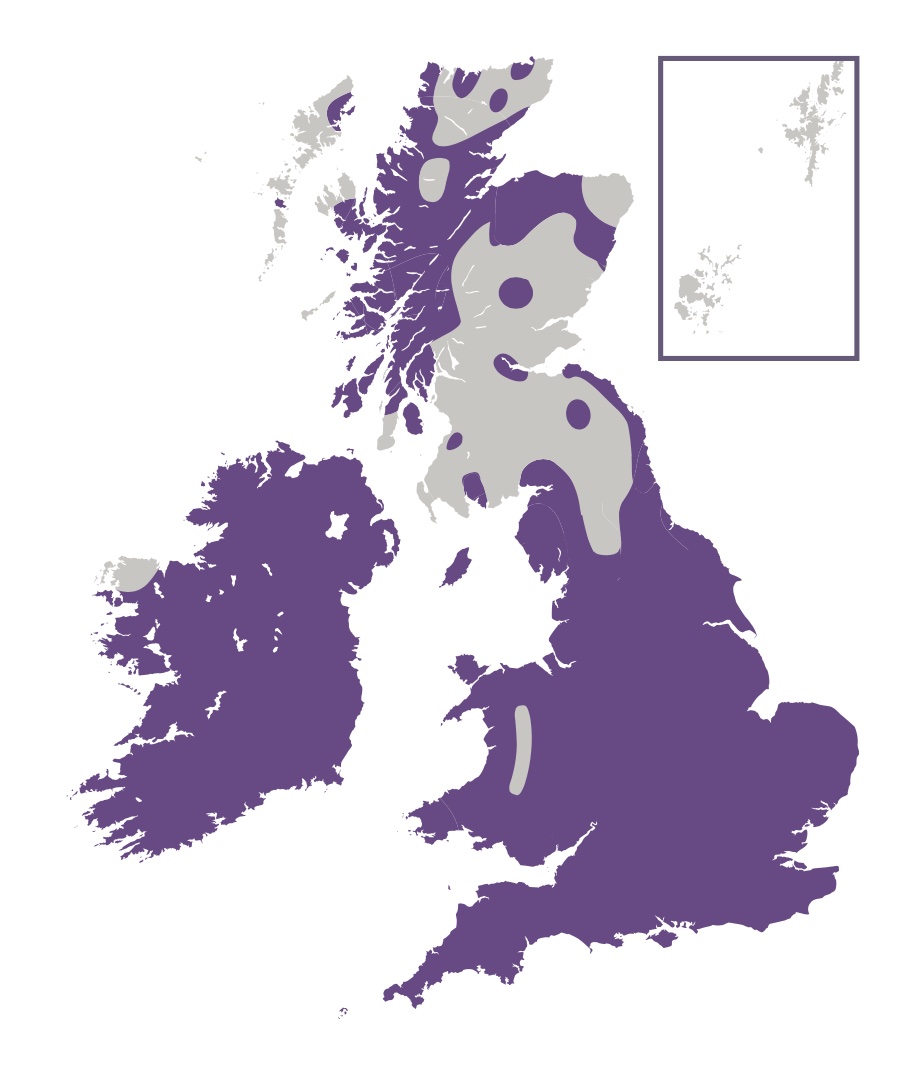
Photo © Peter Eeles
The Speckled Wood is a common butterfly and familiar to many observers, especially in woodland where, as its name suggests, it is most often found. The appearance of this butterfly changes from north to south, forming a "cline", where individuals in the north are dark brown with white spots, with those in more southerly locations being dark brown with orange spots. This has given rise to a number of subspecies.
In England this butterfly is found south of a line between Westmorland in the west and South-east Yorkshire in the east, with a few scattered colonies further north. It is also found in the west and north of Scotland, but is absent from the south, the Outer Hebrides, Orkney and Shetland. It is widespread in both Wales and Ireland, but is absent from exposed high ground. This species is expanding its range and it is anticipated that it will eventually fill the gaps in its distribution.
This butterfly is often seen in more-sheltered conditions than other species and is often the only species seen in dappled shade, or in overcast conditions.
The male is territorial and will inhabit a particular clearing or hedgerow, where he will rest on a prominent sunlit perch waiting for a passing female. Other males are soon seen off before the defending male returns to a favourite perch. If no suitable territory can be found, or when there is a large number of males, the male will patrol in search of a mate instead. When a male encounters a receptive female, which has a more laboured flight than the male, she will fall to the ground or a nearby leaf where, after a brief courtship, the pair mate.
Both sexes feed from honeydew, but also take nectar from a variety of plants when honeydew is scarce, such as Ragwort.

As its names suggests, this butterfly is primarily found in woodland, but can be found anywhere there is sufficient scrub to provide the shaded conditions that this butterfly favours which includes gardens and hedgerows.
Adults feed primarily on Honeydew (N/A). brambles (Rubus spp.), Common Fleabane (Pulicaria dysenterica), Cuckooflower (Cardamine pratensis), dandelions (Taraxacum spp.), ragworts (Jacobaea spp.), Sap (N/A) and Wild Privet (Ligustrum vulgare) are also used.
The primary larval foodplants are Cock's-foot (Dactylis glomerata), Common Couch (Elymus repens), False Brome (Brachypodium sylvaticum) and Yorkshire-fog (Holcus lanatus).
